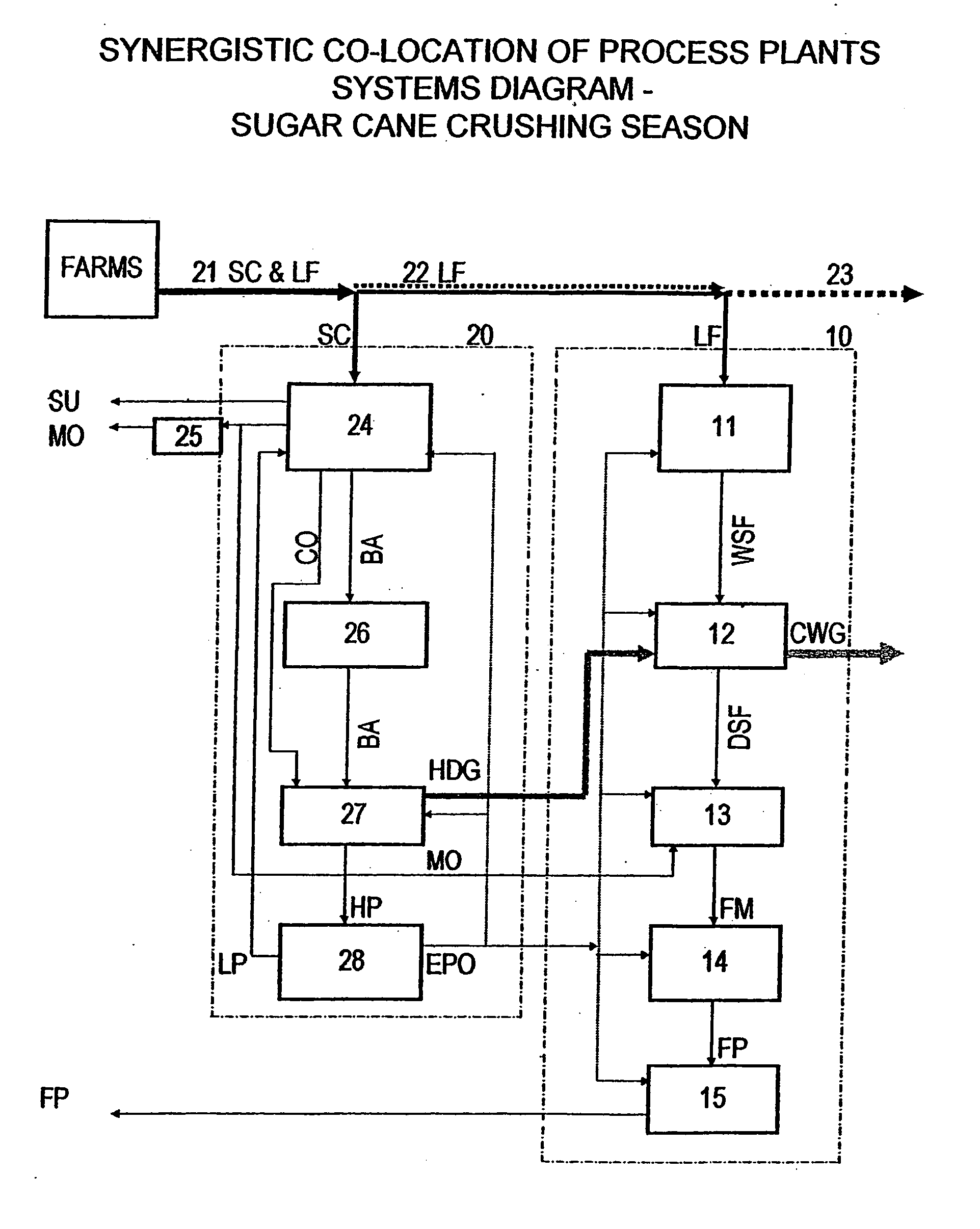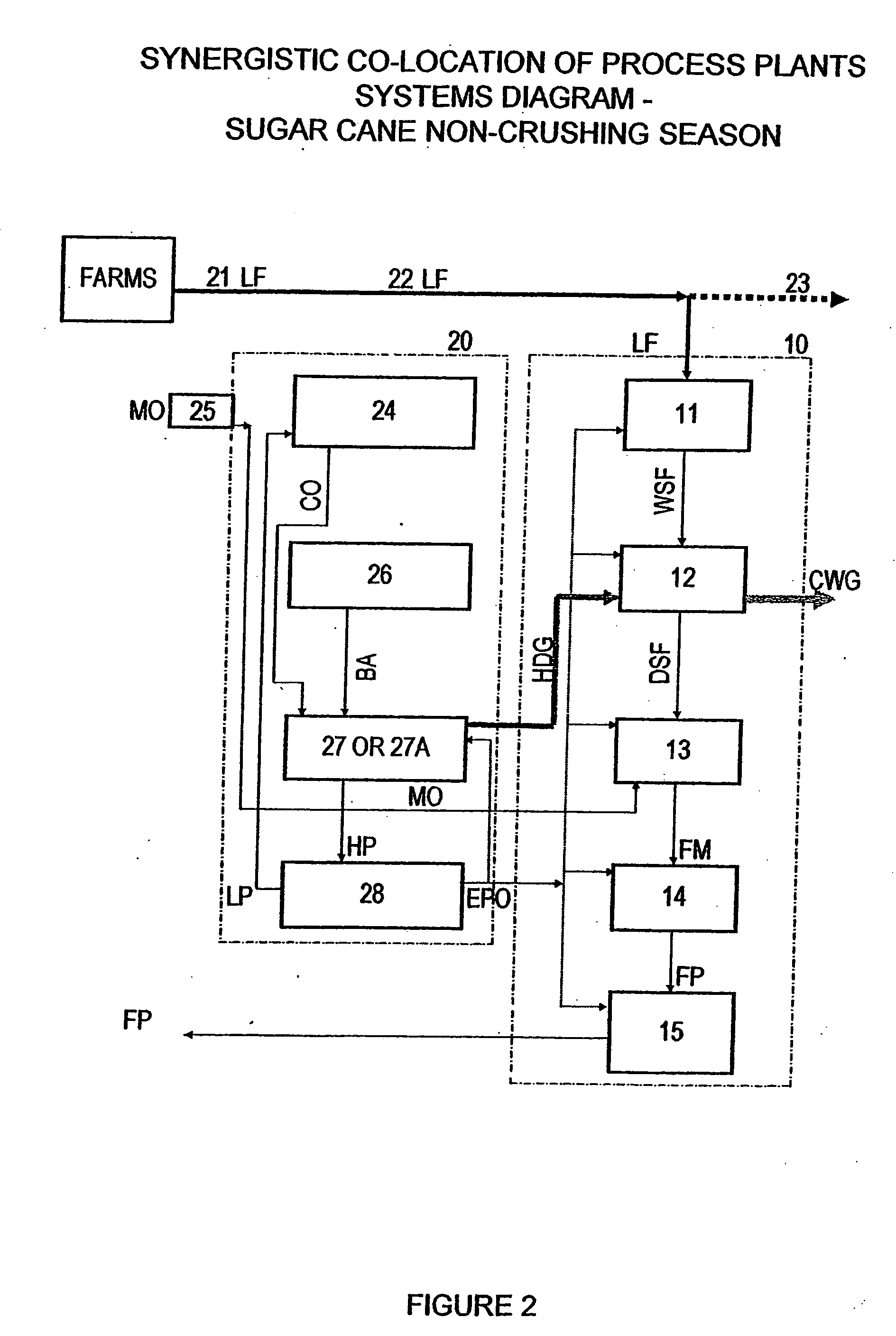Synergistic co-location of process plants
a technology of process plants and colocation, applied in the direction of animal feeding stuff, feeding-stuff, fodder, etc., can solve the problems of large capital investment, inability to achieve full nutritive benefits of stored animal feed, e.g. hay, subject to weather-related yield and quality loss, etc., and achieve the effect of increasing the nutritional value of the produ
- Summary
- Abstract
- Description
- Claims
- Application Information
AI Technical Summary
Benefits of technology
Problems solved by technology
Method used
Image
Examples
Embodiment Construction
[0109] Referring to FIG. 1, freshly harvested legume fodder crop LF e.g. lucerne / alfalfa, is transported to the feed mill 10 (to be hereinafter described in more detail), co-located with a cane sugar mill 20, on full trucks 21 of a common existing sugar cane SC railway or road transport system 22, the empty trucks 23 being dispatched to be reloaded with the legume fodder crop.
[0110] The operation of the cane sugar mill 20 during the sugar cane crushing season is illustrated schematically in FIG. 1 and incorporates a sugar mill process unit 24. Molasses MO produced from the sugar cane is directed to a storage tank 25 and / or the feed mill 10; while bagasse BA is directed to a stockpile 26, from which it is drawn off to fire a boiler 27 which provides high pressure (H.P.) steam for the powerhouse 28 to generate electricity, which can be employed to operate the feed mill 10. Hot dry flue gas HDG from the boiler 27 is used to dry the shredded crop.
[0111] In the non-crushing season, sch...
PUM
 Login to View More
Login to View More Abstract
Description
Claims
Application Information
 Login to View More
Login to View More - R&D
- Intellectual Property
- Life Sciences
- Materials
- Tech Scout
- Unparalleled Data Quality
- Higher Quality Content
- 60% Fewer Hallucinations
Browse by: Latest US Patents, China's latest patents, Technical Efficacy Thesaurus, Application Domain, Technology Topic, Popular Technical Reports.
© 2025 PatSnap. All rights reserved.Legal|Privacy policy|Modern Slavery Act Transparency Statement|Sitemap|About US| Contact US: help@patsnap.com



